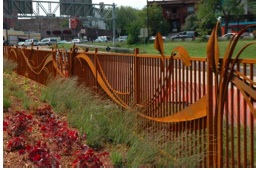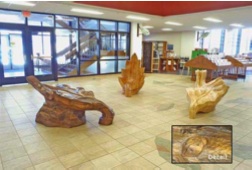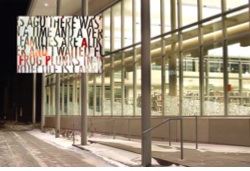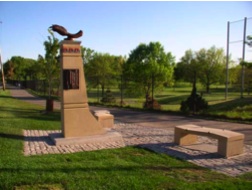The “Public” in Public Art: Your Voice
Amanda Vail gives us a preview of the upcoming discussion of public art in Minneapolis. What do you think it should look like? What neighborhoods should get it? What artists? Read and attend . . .




“Navigating Minneapolis Public Art Policies and Making Public Art Happen”
Wednesday, Sept. 19, 5:30 – 7 p.m.
Walker Art Center, Lecture Room
1750 Hennepin Ave.
As true as it is that personal touches and care make a house into a home, it is also true that the same touches make a neighborhood or a city into a community. Plazas with fountains and music, squares with arching sculpture, roads with artistically wrought iron fences, bus stops with benches that make the commuter pause in thought – all of these contribute to the sense that public space actually means something to someone.
But how do all of these personal touches (i.e. public art) come about? Most people have no idea how their neighborhood park acquired that scintillating mosaic seating, much less what to do if their community wants to sponsor the creation of similar works of art. Many, says Minneapolis Arts Commissioner Heather Doyle, become daunted by the process. The basic reality is, however, that public art at the community level is completely possible, as well as vital, especially when it does involve the many layers of society.
The practical issues of creating and implementing public art will be discussed on Wednesday, September 19th, in a panel discussion entitled “Making Public Art Happen.” The Minneapolis Arts Commission has put together this discussion in the hopes that it will foster further involvement in public art among all parts of the community. To this end, the panel features individuals who have experienced the public art process from many different angles.
Mary Altman, the Public Arts Administrator of the City of Minneapolis, can explain the particularities of the process from the city’s end. Jack Becker, of FORECAST Public Art, has worked to support and create the careers of many public artists. Lisa Elias is a blacksmith and public artist who has recently completed a project (“Stream of Trailing Reeds,” along the Loring Bikeway) for the City of Minneapolis. Ben Haywood, Director of the Soap Factory, has a long history of experience in public art, including positions as the Minneapolis Arts Commissioner and Public Advisory Board member. Michelle Martin, of the Peace Foundation, is able to shed light on the position nonprofit organizations can provide as partners for aspiring public artists. Sara Linnes Robinson worked with the Kingfield Neighborhood Association to acquire arts projects for her district.
In addition to addressing the process for the creation of public art, the discussion will likely meander onto the Minneapolis Plan for Arts and Culture in addition to the general purpose of public art. Ben Heywood would love to see a major, publicly-generated art project on par with Minneapolis’ national and international arts reputation; something that would, he feels, help unite the city if also incorporated with thought on public design.
Public art is, after all, for the community; it takes a community to build it. From artists to neighborhood groups to appreciative individuals – all are encouraged to attend the panel discussion to add their comments and questions. For those unable to attend, a post-panel summary will be posted here on mnartists.org.